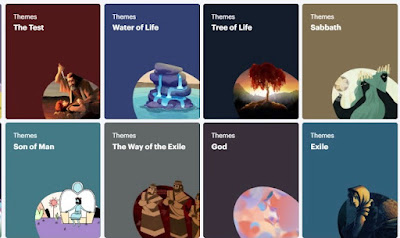Son of David
Big Idea: God's promise to King David of the Old Testament is in sync with Jesus of Bethlehem.
Scripture Spy has been silent this year in part due to my health restraints. Even so, I and my co-leader Tress keep teaching a weekly women’s Bible study.
David
David, Bathsheba’s husband killer.
The Bible in Sync
As the Bible Project guys like to say, the Bible is a unified story that leads to Jesus.
The stories and truths about God in the Old Testament and New Testament are in sync. After all, the author of it all is the Holy Spirit (2 Peter 1:21).
Recently our Bible study reviewed I and II Samuel and had a Christmas party. We asked for stories how their studies had an impact on them.
Son of David
 |
| Diane and Gail at the party! |
As I began my reading for the Advent season this year the references to the SON OF DAVID jumped out at me in a new way after studying 2 Samuel this Fall. So I did a bit of study and came up with these few scriptures...
Some Christmas scriptures highlighting Jesus as the Son of David
Matthew 1:1-15. The genealogy of Jesus Christ, the son of David, the son of Abraham, establishing His royal lineage.
Matthew 1:1 “This is the genealogy of Jesus the Messiah the son of David, the son of Abraham.”
Luke 2:11 "For unto you is born this day in the city of David a Savior, who is Christ the Lord" (KJV).]
2 Samuel 7:12-16 God's promise to David that his descendant would establish an everlasting kingdom, a prophecy fulfilled in Jesus.
2 Samuel 7:13,16 “He is the one who will build a house for my Name, and I will establish the throne of his kingdom forever…Your house and your kingdom will endure forever…your throne will be established forever.”
Luke 1:32-33 The angel tells Mary, "He will be great and will be called the Son of the Most High, and the Lord God will give to Him the throne of His father David, and He will reign over the house of Jacob forever, and of His kingdom there will be no end" (ESV).
AND THEN if that was not enough :) ... the references to "Joseph son of David"
“‘Joseph son of David, do not be afraid to take Mary home as your wife, because what is conceived in her is from the Holy Spirit. She will give birth to a son, and you are to give Him the name Jesus, because He will save His people from their sins.’ All this took place to fulfill what the Lord had said through the prophet: ‘The virgin will conceive and give birth to a son, and they will call Him Immanuel’ (which means ‘God with us’)” (Matthew 1:20-23).
So Joseph also went up from the town of Nazareth in Galilee to Judea, to Bethlehem the town of David, because he belonged to the house and line of David. He went there to register with Mary…she gave birth to her firstborn, a Son…”(Luke 2:4-6).
I have new eyes for this connection between the King David we studied and the Lord Jesus, the KING!
Thank you Gail!
Wherever you are in your journey studying the Bible, ask God to give you fresh eyes to see the correlations, the connections and the God who is the same yesterday, today and forever. (Hebrews 13:8)
_________________
Upcoming post: Will likely will come out once a month in 2026
_________________
Reflect:
Can you think of an example of an Old Testament concept in sync with the New Testament?
For example:. Compare Psalm 51:2 with Hebrews 10:22
.jpg)


.jpg)
.JPG)


.JPG)
.jpg)

.jpg)








.jpg)









